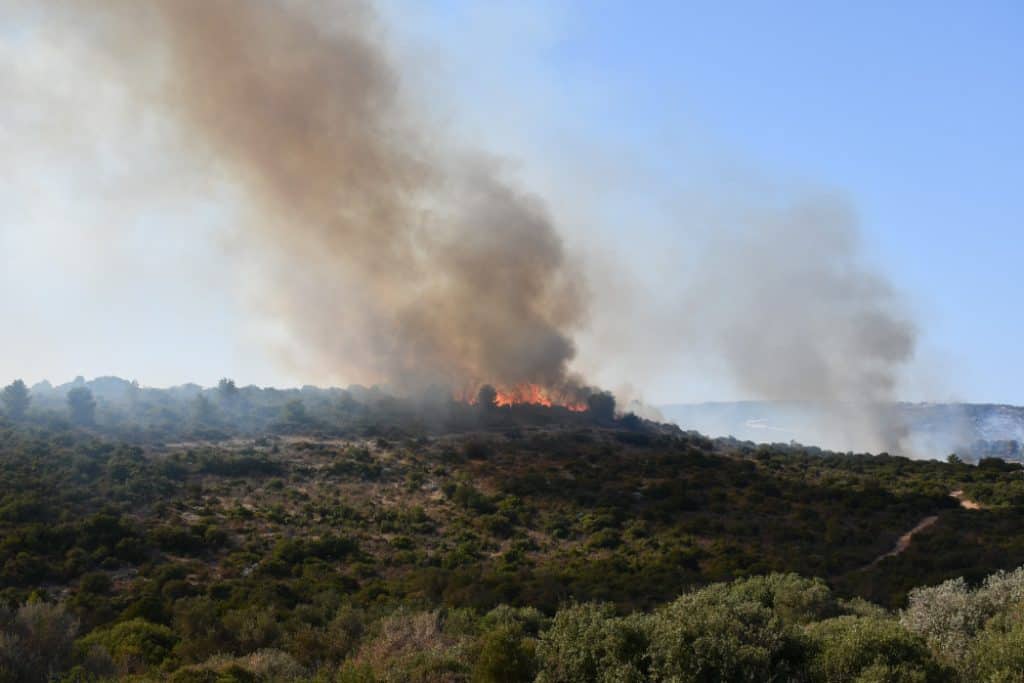
The Israel Defense Forces (IDF) completely dismantled the Rafah Brigade of Hamas, the IDF said on September 12. The announcement came as Israel faced off against increasing attacks from Hezbollah in Lebanon. While the IDF has reduced the Hamas threat and cements control of Rafah and the Philadelphi Corridor in southern Gaza, Hezbollah is launching dozens of rockets and drones at northern Israel.
The defeat of Hamas in Rafah was largely completed by mid-August. Israeli Defense Minister Yoav Gallant initially announced the defeat of Hamas’s Rafah Brigade on August 21. The destruction of this key unit has given the IDF freedom of movement in southern Gaza.
Recent photos from the Philadelphi Corridor, which runs along the Egyptian border in southern Gaza, show a newly paved road and IDF Humvees traversing it. The ability to utilize open-topped vehicles illustrates that threats from RPGs, anti-tank missiles, and sniper fire have significantly reduced. Photos and footage from the new road also show what appear to be drills that may be for searching for tunnels or creating other means of securing the border area.
The IDF says that 2,000 terrorists were eliminated in four months of fighting in Rafah since the IDF first entered the area in May. Thirteen kilometers of tunnels have also been destroyed.
“In recent weeks, the Nahal Brigade, Givati Brigade, 401st Brigade, Yahalom Unit, and Shayetet 13 have been operating in the Tel al-Sultan area. During the operation, over 250 terrorists were eliminated, including the Commander of the Tel al-Sultan Battalion, Mahmoud Hamdan, and most of the battalion’s chain of command,” the IDF said on September 12. “The troops destroyed 80 percent of the underground tunnel routes located near and beneath the Philadelphi Corridor. The division’s engineering forces and the Yahalom Unit continue to locate and destroy underground tunnel routes and terrorist infrastructure in the area.”
The defeat of Hamas’s Rafah Brigade has allowed the IDF to search for tunnels and take account of what it has found in the area. The Times of Israel noted, based on a trip to the area, that a total of 203 tunnels were found, and none of them had once been used to cross into Egypt, “but every single one had been blocked up before the IDF arrived, either by Egyptian authorities or Hamas themselves.” This raises questions about how Hamas brought in weapons and dual-use material to build its arsenal. It increasingly appears that smuggling occurred overland via the Rafah border crossing or other means.
With the defeat of the Rafah Brigade, operations in Gaza have mostly paused. This lull in major battles in this area comes as Israel’s northern border is aflame from Hezbollah rockets. On September 12, Hezbollah launched rockets targeting several communities near the border. Rockets landed near Yaara, close to the Lebanese border and the Mediterranean Sea in northern Israel. The rockets caused a fire that winds spread until it was eventually extinguished in the afternoon.
However, Hezbollah was not finished for the day. The Iranian-backed terrorist group fired a large barrage of rockets at the northern Israeli city of Safed, which is where IDF Northern Command’s headquarters is located. The rockets were mostly intercepted by Israel’s Iron Dome air defense system. However, some shrapnel and falling debris caused a fire near Safed.
On September 13, Hezbollah carried out more attacks, using drones to target several areas in northern Israel. Hezbollah had been increasingly relying on unguided rockets over the last two weeks before shifting to drone attacks on Friday. The IDF responded to the attacks.
“In Lebanon, more than 140 terror targets were struck, including a weapons manufacturing site, terror infrastructure, weapon warehouses, observation posts, and launchers aimed toward Israel’s northern border communities. Additionally, several Hezbollah terrorists were eliminated, including a commander in the Radwan Unit,” the IDF said on September 13.
Hezbollah has said its recent attacks targeted an IDF air defense base, according to a report in Iranian state media that was based on a statement issued by Hezbollah to the group’s Al-Manar media. “Hezbollah also conducted a major offensive against northern parts of the occupied lands on Thursday, firing 50 missiles against the region,” Iran’s IRNA noted. This report indicates that Hezbollah also sees the large volume of attacks during September 12 and September 13 as an escalation.







